Spring Garden Insights
By Brian Nixon, Horticultural Manager
As we welcome spring, we look back at a winter that set rainfall records and made it difficult to envision the beauty awaiting us in spring. The record-setting precipitation and mild temperatures throughout the winter months led to early colour and gave our gardeners a head start on spring preparations. Hard to remember that last year we were shoveling snow off the flower beds to help speed up our spring display, a true indication that each year can differ, making it difficult to predict bloom times from one year to the next.
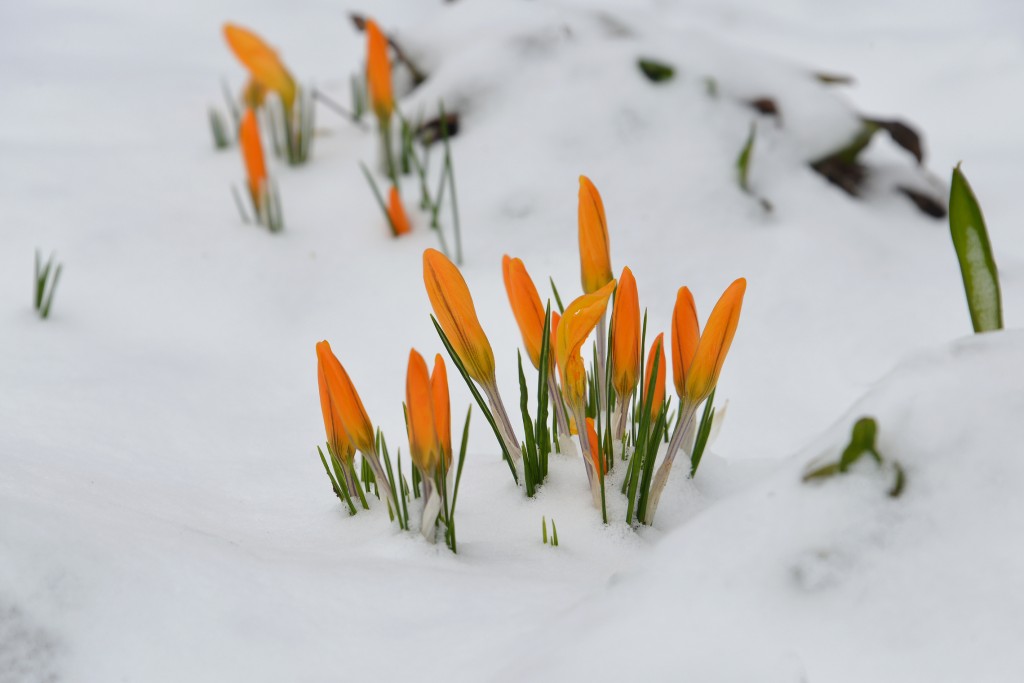 In late February & early March last year we had snow covering the early signs of spring
In late February & early March last year we had snow covering the early signs of spring
Our spring display will greet you before you reach the entrance of The Gardens. Mr. Butchart imported 500 Cherry trees from Yokohama Nurseries in Japan in 1936, 400 were planted along Benvenuto Avenue (The Butchart Gardens to West Saanich Road) and 100 were planted throughout The Gardens. Over 20 varieties were planted, some still here surviving over 84 years. This may be attributed to the tender loving care they receive from our arborists.
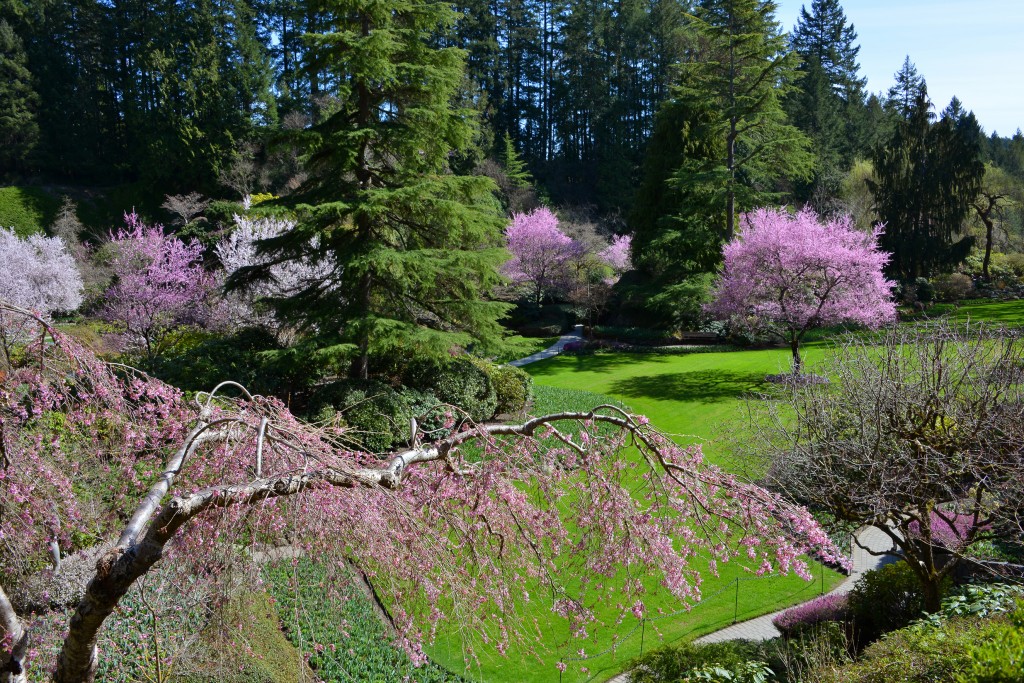 The lovely Cherry blossoms in the Sunken Garden
The lovely Cherry blossoms in the Sunken Garden
Obvious signs that the spring season is here include numerous flowering ornamental fruit trees, Rhododendrons, Azaleas, over 300,000 flowering bulbs and the cheerful sound of birds. The displays of Tulips and Narcissus (Daffodils) are particularly spectacular with biennials underplanted throughout the annual beds. Two types of biennials, Myosotis (Forget-Me-Not) and Bellis (English Daisy), are used extensively in our spring plantings. In addition to the beauty bursting forth in the landscaped gardens, we display early colour in large pots, urns, planters and hanging baskets in Waterwheel Square as well as strategically placing them throughout the property. This year our Viola (Pansy) baskets are performing exceptionally well. It’s no wonder so many of our visitors comment that spring is their favourite season!
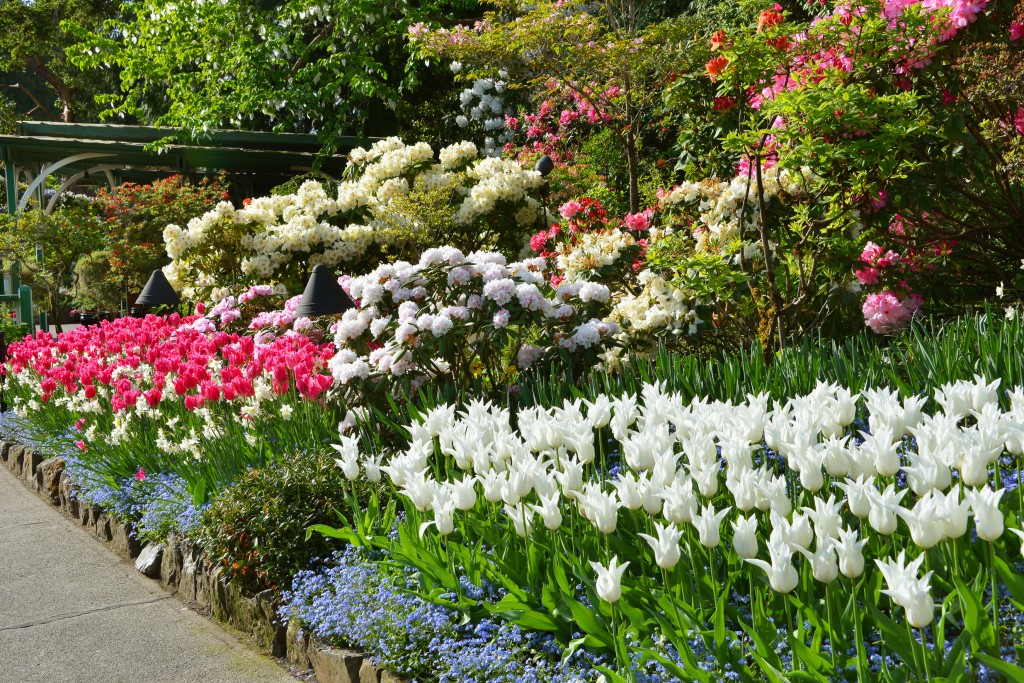 Myosotis in amongst Tulips and Daffodils, a common practice in our spring garden beds
Myosotis in amongst Tulips and Daffodils, a common practice in our spring garden beds
For a complete listing of highlights in The Gardens, I suggest you check our gardening blog regularly and read “What’s in Bloom Now”.
Early spring, we “scratch” the flower beds and backgrounds. This is the term we use to describe cultivating the crusty soil surface allowing for nutrients, air and water to penetrate deep into the soil to benefit plant roots. It’s amazing to see how much of a ‘fresh’ look this gives the soil and how much it accelerates the growth of plants. This simple and effective task, although time consuming, is part of our regular garden maintenance, and one which has great reward when we and our visitors view the results.
While our visitors are enjoying the wonderful sights of spring, our gardeners are prepping for the upcoming summer season. Aside from the standard gardening duties there are over 2500 roses to prune, a job which takes over two weeks and requires a very strong wrist. Depending on where you live, we recommend pruning your roses when the forsythia is blooming. We begin this job mid-March and it typically takes two weeks to prune the entire Rose Garden, with flowering beginning mid-May or early June. Peak season is July and August, something you can look forward to during a summer visit.
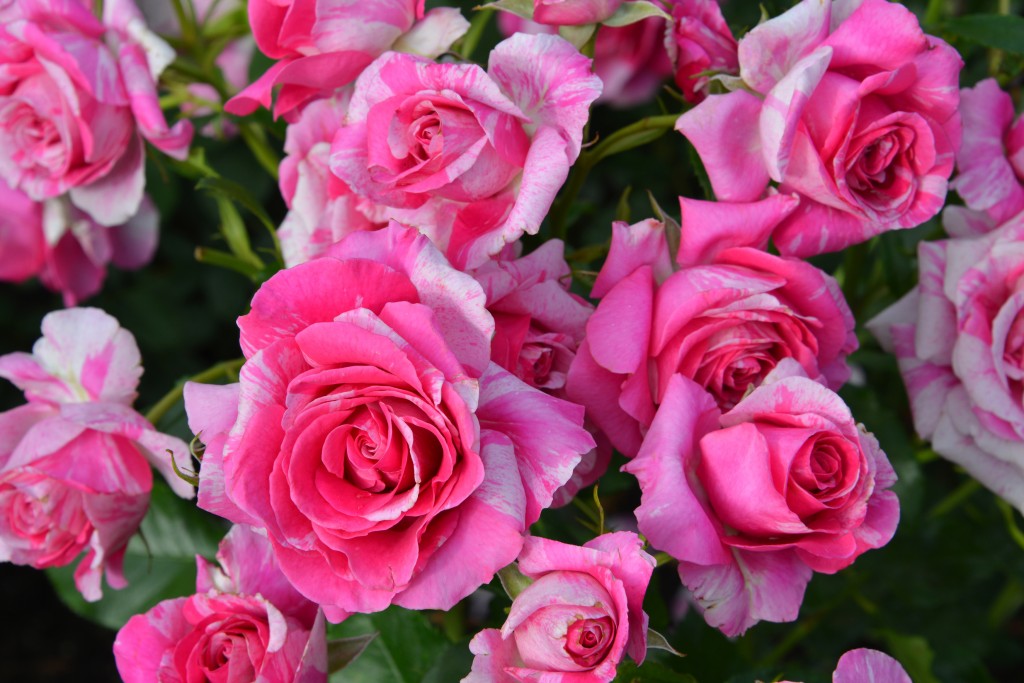 Roses set to bloom late spring and early summer
Roses set to bloom late spring and early summer
Next up is lawn maintenance, which follows a schedule of aerating, dethatching, top dressing and over seeding many of the lawns. We choose to perform these jobs in the spring as the lawn is actively growing and has time to recover. Turf maintenance keeps the lawn healthy and in optimal condition year-round which is particularly important for high traffic lawns like the fireworks and concert lawns which can become compacted due to increased foot traffic.
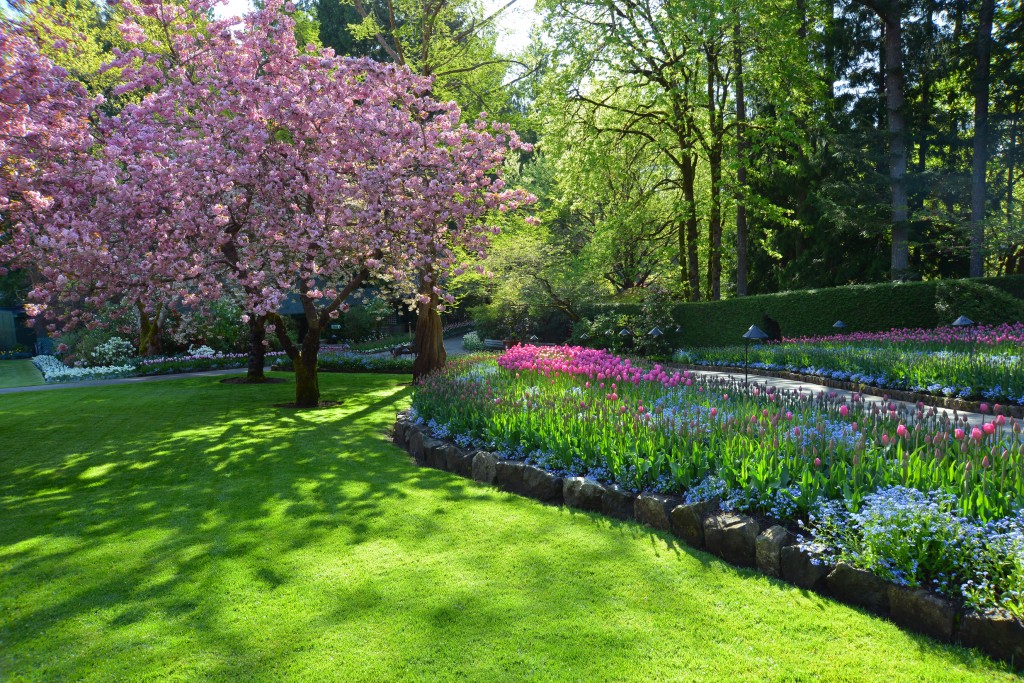 Spring turf maintenance prepares the lawn where heavy foot traffic occurs in the summer months
Spring turf maintenance prepares the lawn where heavy foot traffic occurs in the summer months
We are not the only ones enjoying the nice spring weather as pests also thrive now. This is the time of year when we become much more diligent in monitoring for pest and disease. Our Integrated Pest Management (IPM) program monitors and identifies pest problems and early detection allows us to take action in managing pests in an effective, economical and environmentally sound manner.
I have given you a sneak peak of our colourful spring display, and some of the work that goes into maintaining The Garden. I now invite you to plan a visit and enjoy spring with us.

